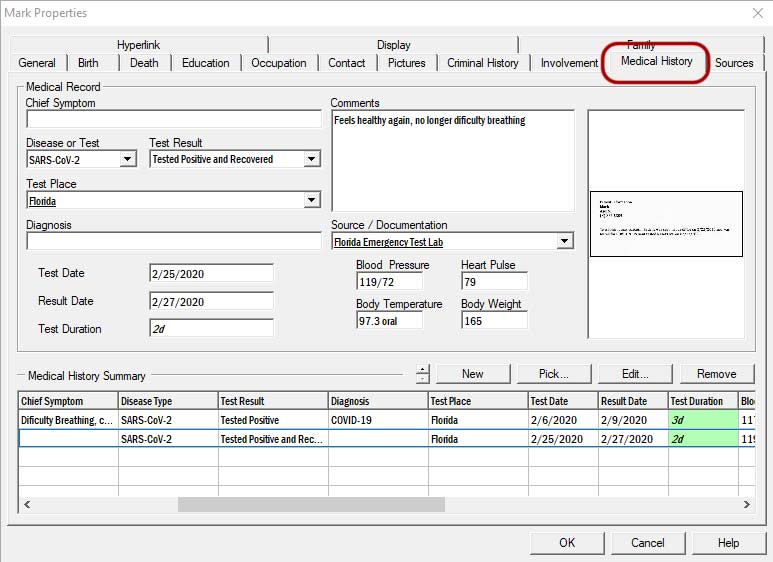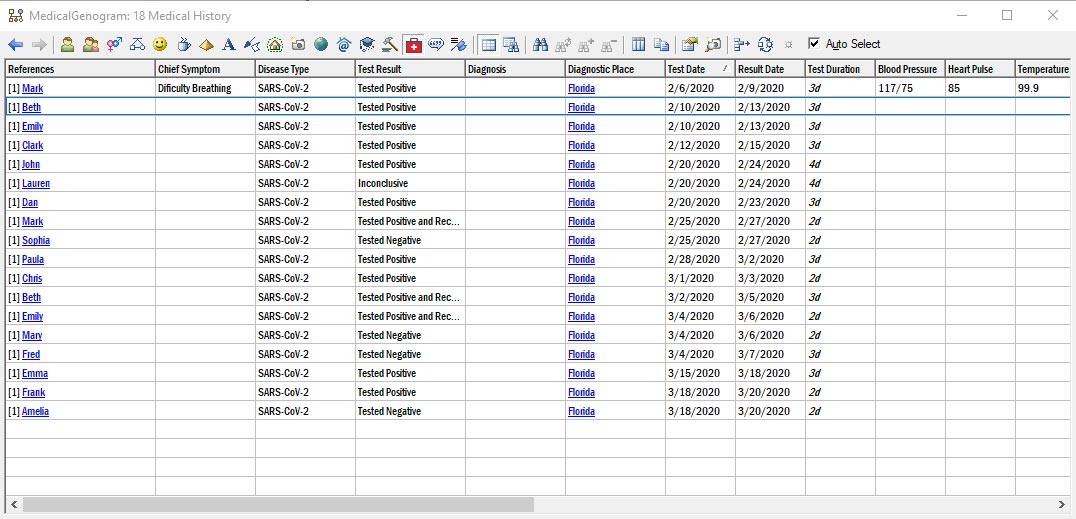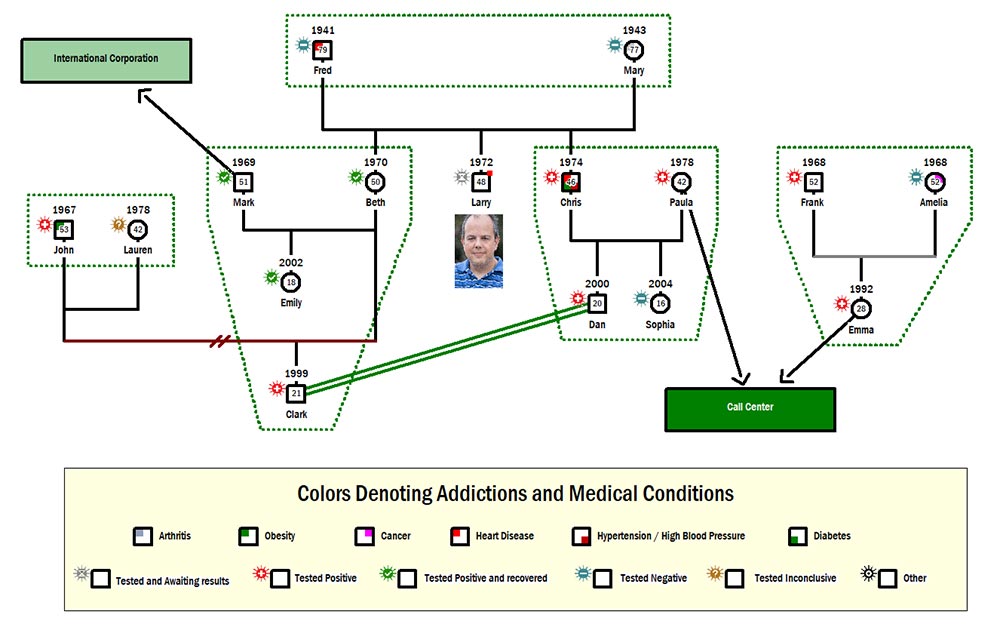GenoPro : A practical solution for health professionals
GenoPro offers a solution for gathering medical and psychosocial information
from your patients in an accessible format. As a result of using GenoPro,
you will have a better understanding of the context of the symptoms your
patients present during their medical visits.
New in GenoPro 2020 we have a brand new Medical history panel.
 Medical history panel, new in GenoPro 2020
Medical history panel, new in GenoPro 2020
In the new medical history panel, you can record a history of of symptoms, tests, vital signs, comments, diagnosis,
source documents, and photos.
Included is also a very helpful medical history table view which allows you to view the medical history of multiple
people at the same time and sort the data in any way that you may find it helpful.
 Medical history table, new in GenoPro 2020
Medical history table, new in GenoPro 2020
Also new in GenoPro 2020, we now have specific symbols that show up on the Genogram related to the Medical History
Panel, which can be used to track infectious diseases such as COVID-19 and how they have spread, and who has not been tested.
 Icon labels that help track infectious diseases testing and results.
Icon labels that help track infectious diseases testing and results.
To learn more about the new features click here .
Additional to the new Medical History information, GenoPro allows you to create medical genograms that go
beyond the simple medical pedigree. Standard symbols and codes have been developed so that
genograms can be read and interpreted systematically like an
electrocardiogram. You may also develop your own symbols as seen in the
legend below. GenoPro also allows you generate detailed reports with a
simple click of the mouse. The medical genogram and the Medical history is central to the health
history of each patient and their family and can serve many purposes in patient care.
Genetics
GenoPro allows you to understand the genetic disposition of individuals for
certain diseases. The genogram graphically portrays inherited risk for
specific health problems and suggests strategies for screening, diagnosis,
and management. For example, a 30-year-old woman with a breast mass and a
family history of premenopausal breast cancer requires early mammography and
extra patient education and reassurance. Displaying family illness patterns
can also pave the way for patient education about lifestyle modification.
Highlighting a family tendency to develop diabetes and hypertension may
encourage the patient to exercise regularly and lose weight.
 Genogram symbols examples
Genogram symbols examples
Family
Genograms also provide a visual display of the family and the complexities
of family relationships. They provide a quick visual reference of various
categories of family information that has been shown to play a role in
illness: family structure, pattern repetition in families, family
relationship patterns, and family balance and imbalance. For example, a
genogram may demonstrate that a 21-year-old male patient who suffers from
severe anxiety attacks was abandoned by his mother at the age of six,
underlining key issues to discuss in patient counseling. Displaying family
relationships communicates strongly to the patient that you believe family
factors influence health, that you understand that illness affects the
family, and that you are open to discussions on family matters. Your
patients may feel free to bring up concerns about sensitive issues such as
domestic violence more quickly than they would have otherwise done so.
A practical solution
Genograms can be done during the initial visit with almost every new
patient. Doing a genogram puts patients at ease by elevating them from the
subordinate patient role into a more comfortable role of expert (on their
own families). Once a genogram is entered in the medical record, it can
continue to serve as a "family scorecard" for subsequent visits. The
physician who scans a patient's genogram before entering the examining room
can quickly review the basic family situation. For example, a single parent
household's problems will be quite different from those of a blended family
with stepchildren. By using GenoPro, you will be able to quickly evaluate
what needs can be satisfied by family resources, and what medical and social
resources will need to be provided.